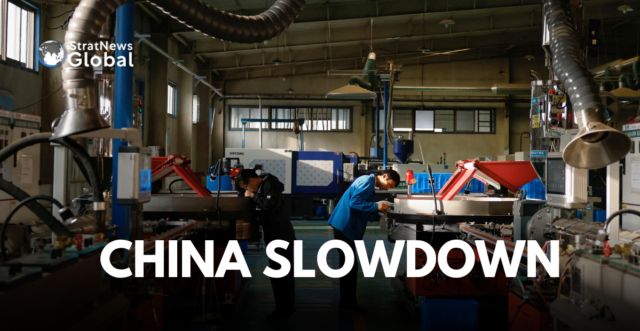China’s economy grew at the slowest pace since early 2023 in the third quarter, and though consumption and industrial output figures for last month beat forecasts a tumbling property sector remains a big challenge for Beijing as it tries to boost growth.
The world’s second-largest economy grew 4.6% in July-September, official data showed, a touch above a 4.5% forecast in a Reuters poll but below the 4.7% pace in the second quarter.
Need Stimulus Packages
Policymakers could find cause for optimism in forecast-topping industrial output and retail sales data for September. However, the property sector continued to show sharp weakness and backed markets’ calls for more support steps.
“China’s Q3 2024 data is not a turn-up for the books,” said Bruce Pang, Chief Economist at JLL. “The performance aligns with market expectations, given the weak domestic demand, a still struggling housing market, and slowing export growth.”
“The stimulus package announced at the end of September will take time and patience to boost growth over the next several quarters,” he added.
Reeling Economy
The latest figures come as authorities have started to sharply increase stimulus measures in an effort to ensure the economy meets the government’s 2024 growth target of around 5%.
A Reuters poll showed China’s economy is likely to expand 4.8% in 2024, undershooting Beijing’s target, and growth could cool further to 4.5% in 2025.
The economy has stuttered through uneven growth this year, with industrial production outstripping domestic consumption, fanning deflationary risks amid the property downturn and mounting local government debt.
Policymakers, who have traditionally leaned on infrastructure and manufacturing investment to drive growth, have pledged to shift focus towards stimulating consumption, but markets are awaiting further details of a planned fiscal stimulus package.
On a quarterly basis, the economy expanded 0.9% in the third quarter, compared with 0.7% growth in April-June, and below forecast of 1.0%.
“While (the Q3 figure) is a marginal decline from the second quarter, it makes the official growth target of 5% difficult to achieve if this trend continues to year-end,” said Zhiwei Zhang, Chief Economist at Pinpoint Asset Management.
“We are waiting for more clarity on the fiscal stimulus,” he added.
Exports Dimming Too?
Recent data raised the risk of China sliding into an entrenched phase of deflationary pressures as prospects for exports, the economy’s lone bright spot this year, look to be dimming amid foreign trade curbs.
China’s export growth slowed sharply in September while imports also decelerated, undershooting forecasts by big margins and suggesting manufacturers are slashing prices to move inventory ahead of tariffs from several trade partners.
Worryingly, consumer inflation unexpectedly eased in September, while producer price deflation deepened, heightening pressures on Beijing to take steps to spur demand as exports lose steam.
Fresh Fiscal Stimulus
Last week, China’s finance minister pledged to “significantly increase” debt to revive growth, but left investors guessing on the overall size of the stimulus package.
China may raise an additional 6 trillion yuan ($842.60 billion) from special treasury bonds over three years to help bolster the sagging economy through expanded fiscal stimulus, Caixin Global reported, citing multiple sources with knowledge of the matter.
Reuters reported last month that China plans to issue special sovereign bonds worth about 2 trillion yuan this year as part of a fresh fiscal stimulus.
The central bank in late September announced the most aggressive monetary support measures since the COVID-19 pandemic, including interest rate cuts, a 1 trillion yuan liquidity injection and other steps to support the property and stock markets.
(with inputs from Reuters)





